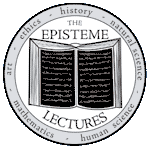First, the ways of deciding what's important art have to be varied and complex, or we'd all be capable of being curators. We ain't. Although some of these decisions must of course be guided by critical response to the art, the requirements of establishing a significant collection, and the audience, there's of course some elusive quality that requires years of study. The arrangement of pieces within an exhibit probably requires similar insight.
Perhaps good art (perhaps not important art) all shares a quality of leaving a phenomenological impression that transcends translation. If you could fairly explain the piece without the piece, why would you need the piece in the first place? Some art can do this - either in its ambiguity (no one translation can capture the entire phenomenological experience of viewing/interacting with the piece) or in complexity (there's just no way of putting it into words - perhaps the piece is not static and no description remains adequate permanently). In any case, there's a connection between what makes art Art and what makes art untranslateable.
Tuesday, March 24, 2009
Subscribe to:
Post Comments (Atom)



No comments:
Post a Comment